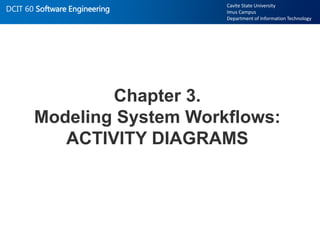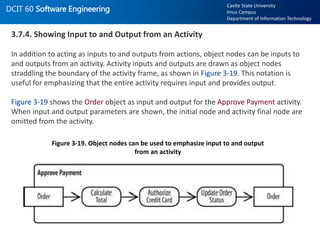This document discusses activity diagrams which are used to model system workflows and business processes. It covers the key components of activity diagrams including actions, decisions, merges, and parallel flows. Actions represent steps in a process, decisions allow different sequences based on conditions, and parallel flows can show simultaneous tasks using forks and joins. The document provides examples and best practices for constructing clear and accurate activity diagrams.












![DCIT 60 Software Engineering
Cavite State University
Imus Campus
Department of Information Technology
Each branched edge contains a guard condition written in brackets. Guard conditions
determine which edge is taken after a decision node. They are statements that evaluate to
true or false, for example:
[authorized] If the authorized variable evaluates to true, then follow this outgoing
edge.
[wordCount >= 100. If the wordCount variable is greater than or equal to
1,000, then follow this outgoing edge.](https://image.slidesharecdn.com/4activitydiagrams-160208075532/85/4-activity-diagrams-13-320.jpg)










































